Welcome to my review of the Sigma 60-600mm F4.5-6.3 DG OS HSM Sport lens. Although the 60-600 is not available in Sony E-mount, thanks to the Sigma MC-11 adapter (Canon EF to Sony E-mount) I’ve been able to use this monster lens on my Sony a7 III, a7R III and a9 camera body’s.
Ethics statement: Sigma UK loaned me a Canon EF mount version of this lens together with the MC-11 adapter for a couple of weeks, other than the free loan I was not provided with any form of compensation to write this review.
Review Status: Complete
Review Started: 8th January 2019
Last Update: 14th January 2019
**Please Note: Unless otherwise mentioned no post processing has been applied to the image samples in this guide except for cropping. Full resolution SOOC JPEG images are available to download. RAW files are also available but password protected to help keep my hosting costs sensible. However, I do provide the username/password to all members of our community forum. All images are copyright protected and may be used for personal use only.
Lens Overview
The Sigma 60-600mm F4.5-6.3 DG OS HSM Sport lens is the world’s first 10x optical zoom telephoto lens with a wide end of 60mm and a tele end of 600mm. With such a large focal range you are effectively getting a 70-200mm and a 150-600mm lens in one single lens body. Weighing in at a hefty 2700g it manages to shave 160g off the weight of Sigma’s 150-600mm f/5-6.3 DG OS HSM S lens.
Sigma only makes the 60-600 with Canon EF, Nikon and Sigma mounts at this time, but you can adapt this lens to Sony E-mount with the MC-11 adapter just like I have done so for this review.
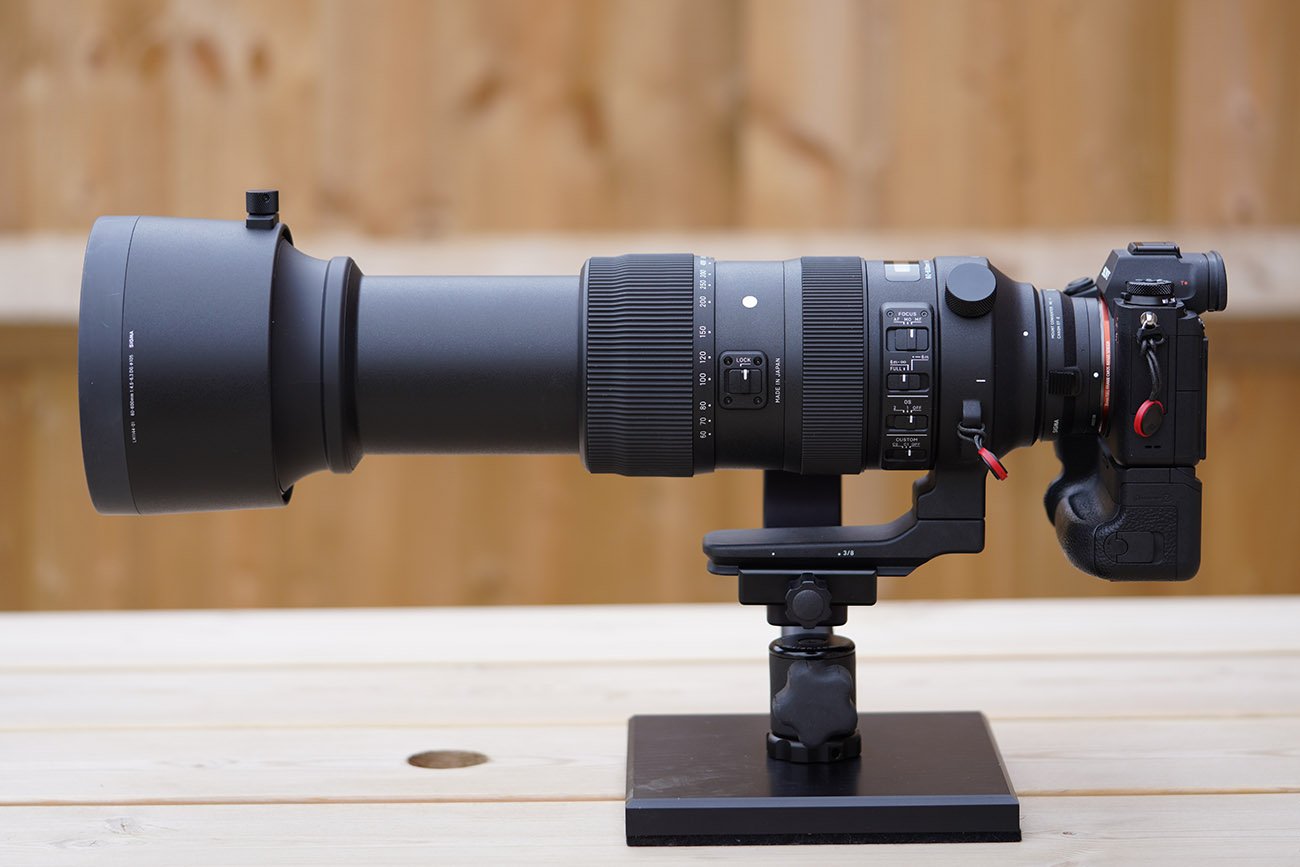
The Sigma 60-600 on my Sony a9 with the VG-C3EM battery grip (my review) and mounted to my Jobu Design Jr. 3 Gimbal Head * and a Neil Neville Hide Base Plate.
Key Specs
- Mounts: Canon EF, Nikon, Sigma, (Sony E-mount via MC-11 adapter)
- Format: Full-Frame
- Focal length: 60mm – 600mm
- Stabilization: Yes
- Weather sealing: Yes
- Construction: 25 elements in 19 groups
- Aperture blades: 9
- Maximum aperture: f/4.5 – 6.3
- Minimum aperture: f/22 – f/32
- Minimum focusing distance: 60-260cm / 23.6-102.4in.
- Filter diameter: 105mm
- Weight: 2700g / 95.2oz
- Length: 268.9mm / 10.6in.
- Diameter: 120.4mm / 4.7in.
You can find the full specifications on Sigma’s website.
Sample Images
The sample images included in this review have been shot on a mix of my Sony a7 III, a7R III and a9 (all with latest firmware at time of review). The Sigma MC-11 adapter (firmware 1.14) was used to adapt the Sigma 60-600mm (Canon EF-mount) to Sony E-mount.

a9 @ 600mm | 1/500 | f/6.3 | ISO 400 | Handheld | ** Full Resolution SOOC Download: JPEG | RAW

a7R III @ 600mm | 1/1000 | f/6.3 | ISO 320 | Handheld | ** Full Resolution SOOC Download: JPEG | RAW

a7R III @ 600mm | 1/1600 | f/6.3 | ISO 800 | Cropped | Handheld | ** Full Resolution SOOC Download: JPEG | RAW

a7R III @ 600mm | 1/500 | f/6.3 | ISO 1000 | Handheld | ** Full Resolution SOOC Download: JPEG | RAW
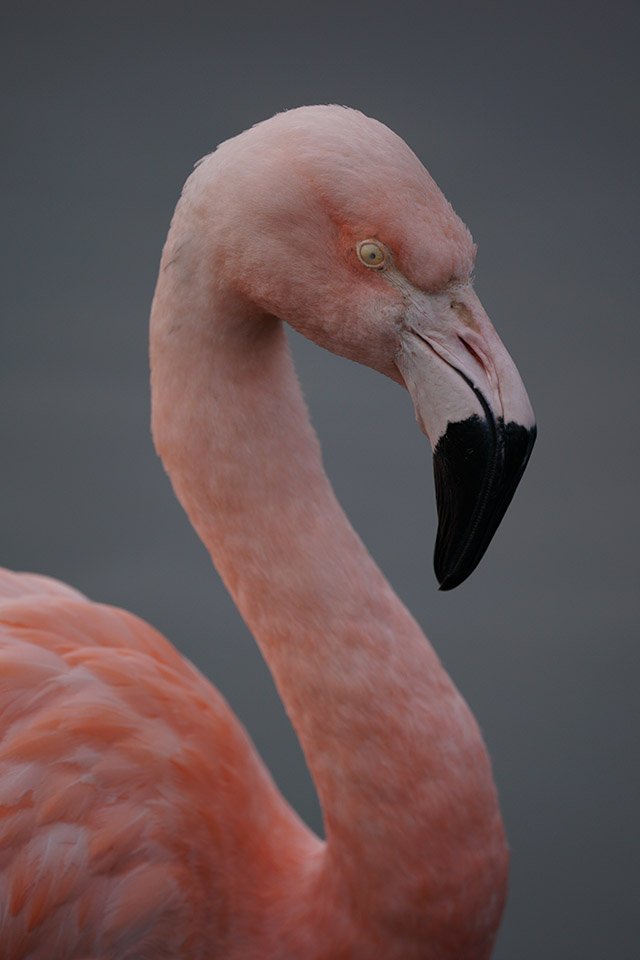
a9 @ 600mm | 1/500 | f/6.3 | ISO 400 | Handheld | ** Full Resolution SOOC Download: JPEG | RAW

a9 @ 600mm | 1/500 | f/6.3 | ISO 400 | Handheld | ** Full Resolution SOOC Download: JPEG | RAW

a7R III @ 600mm | 1/500 | f/6.3 | ISO 2000 | Handheld | ** Full Resolution SOOC Download: JPEG | RAW

a7 III @ 600mm | 1/1250 | f/6.3 | ISO 2500 | Handheld | ** Full Resolution SOOC Download: JPEG | RAW

a7 III @ 600mm | 1/1000 | f/6.3 | ISO 12800 | Handheld | ** Full Resolution SOOC Download: JPEG | RAW

a9 @ 600mm | 1/1000 | f/6.3 | ISO 3200 | Cropped | Handheld | ** Full Resolution SOOC Download: JPEG | RAW

a9 @ 600mm | 1/1000 | f/6.3 | ISO 1000 | Cropped | Handheld | ** Full Resolution SOOC Download: JPEG | RAW

a9 @ 600mm | 1/1000 | f/6.3 | ISO 500 | Cropped | Handheld | ** Full Resolution SOOC Download: JPEG | RAW

a9 @ 600mm | 1/500 | f/6.3 | ISO 400 | Handheld | ** Full Resolution SOOC Download: JPEG | RAW
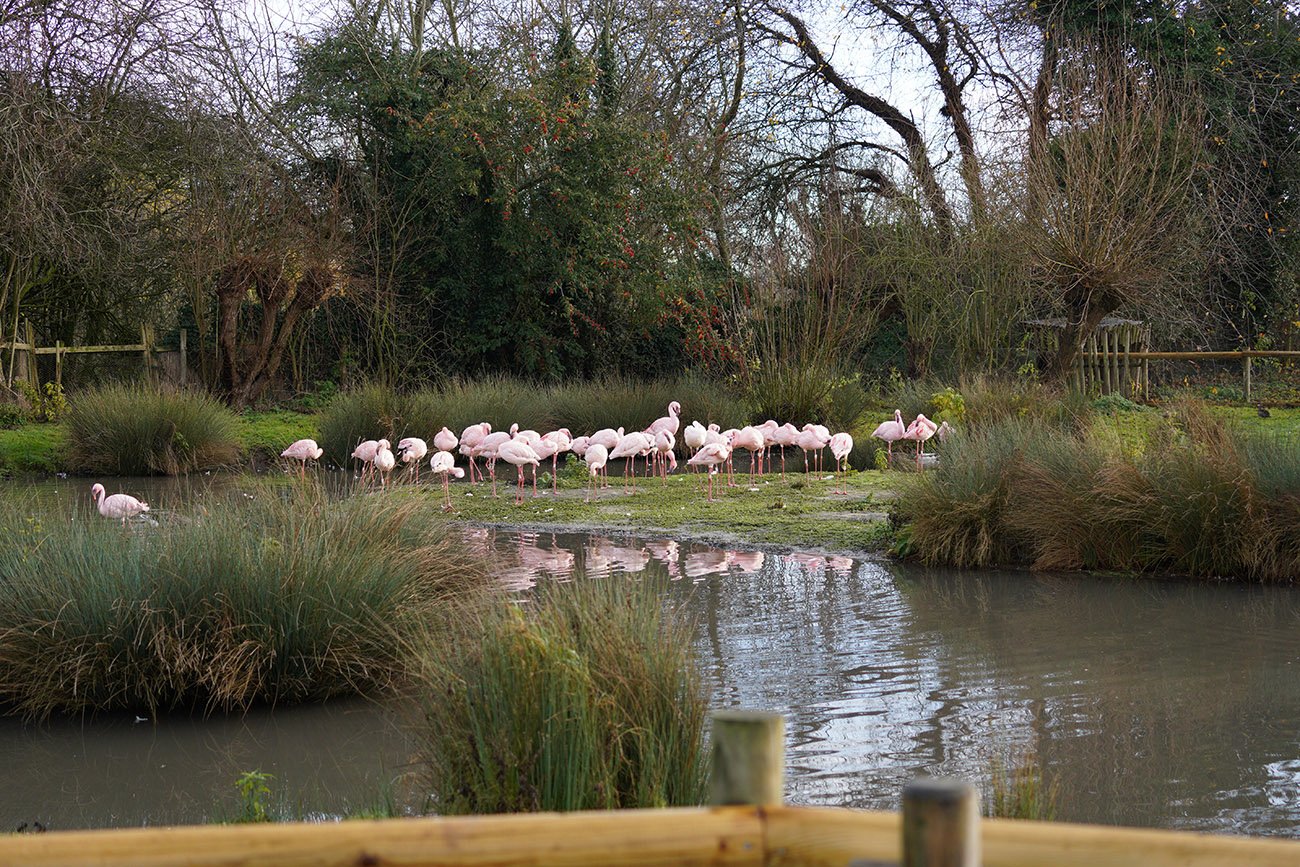
a7 III @ 60mm | 1/1000 | f/6.3 | ISO 800 | Handheld | ** Full Resolution SOOC Download: JPEG | RAW

a7 III @ 600mm | 1/1000 | f/6.3 | ISO 640 | Handheld | ** Full Resolution SOOC Download: JPEG | RAW
Build Quality / Handling
Sigma has a reputation for creating well built lenses, particularly in their Sport Series and this lens is no exception. The Sigma 60-600mm is made of a combination of magnesium-alloy, carbon fiber reinforced plastic (CFRP) and thermally stable composite (TSC) materials, with the front and rear lenses incorporating a water and oil-repellent coating, the lens is also dust-proof and splash-proof. Honestly, this lens is built like a tank and at 2700g it could quite easily be used as a battering ram should you have the misfortune to forget your house keys.
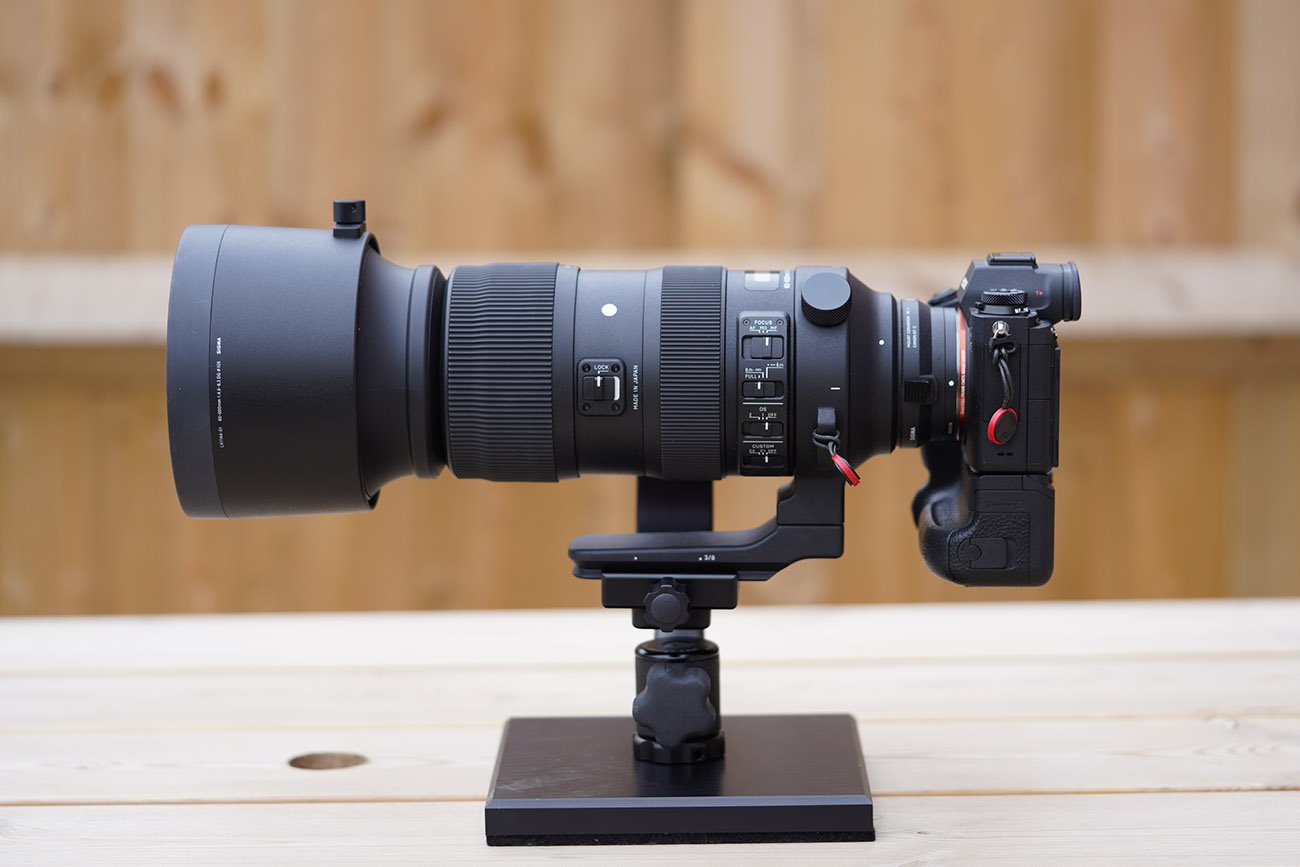
The Sigma 60-600mm f/4.5-6.3 DG OS HSM Sports lens ships with a soft padded case, a shoulder strap, a very large lens hood (LH1144-01) and a nylon front lens cap (LC-740E) that slips over the lens hood when reversed.
The rotating tripod collar features a replaceable Arca-compatible base plate with ¼”-20 and 3/8″ threads, this is something that I really wish Sony would incorporate with their larger zoom lenses to save carrying an additional tripod mounting plate. When you loosen the collar screw to rotate the lens you’ll find that there are notches every 90° which provide a satisfying click, this saves the trouble of lining up white lines.
As for features, the lens offers everything that you would expect from a professional telephoto zoom lens. There’s optical stabilization which offers around 4 stops of compensation and also has two modes – mode 1 that stabilizes both the horizontal and vertical axis, and mode 2 that stabilizes just the vertical axes for panning shots. If you look through the viewfinder at 600mm and toggle the OS on and off you’ll see just how well this works. I was able to shoot pin sharp images handheld at 1/80sec at 600mm with the OS turned on.
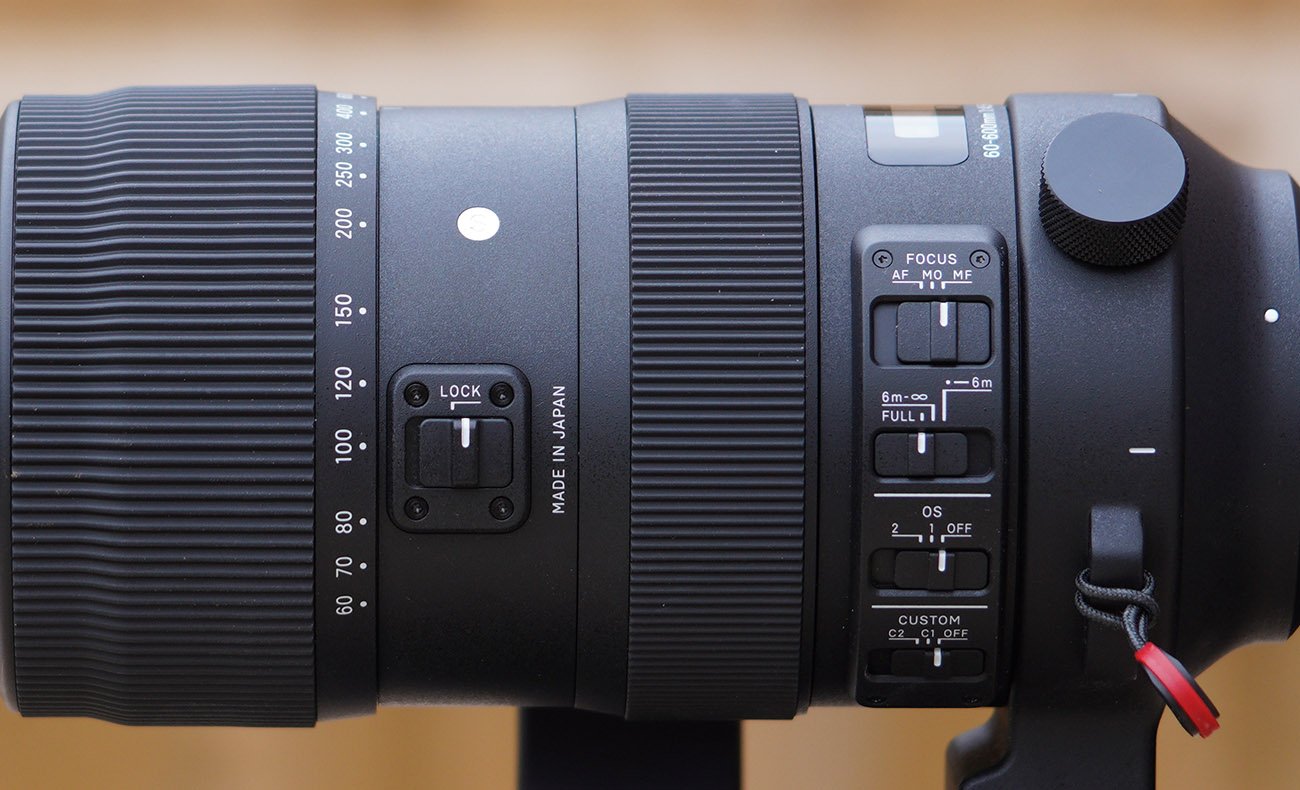
The manual easy to grip focus ring is located towards the rear of the lens and it offers just the right amount of resistance, well for me it does as I’m not too keen on focus rings that spin too easily and throw out the focus with the lightest of touches. You can toggle focus on the lens between autofocus (AF), manual override (MO) and manual focus (MF). If you rotate the focus ring when set to MO the lens will jump from autofocus to manual focus.
There’s a focus limiter switch that lets you toggle between the full focus range, 6m-infinity, or the minimum focusing distance of your focal length to 6m, with the later being very useful for close up shots. You can also use the USB dock (sold separately) to customise these ranges to your own needs, as well as customizing the AF speed and optical stabilization effect which can then be saved with the custom C1 and C2 switches. There’s also a distance scale on top of the lens that displays (in feet and meters) the closest focusing distance depending on your focal length.
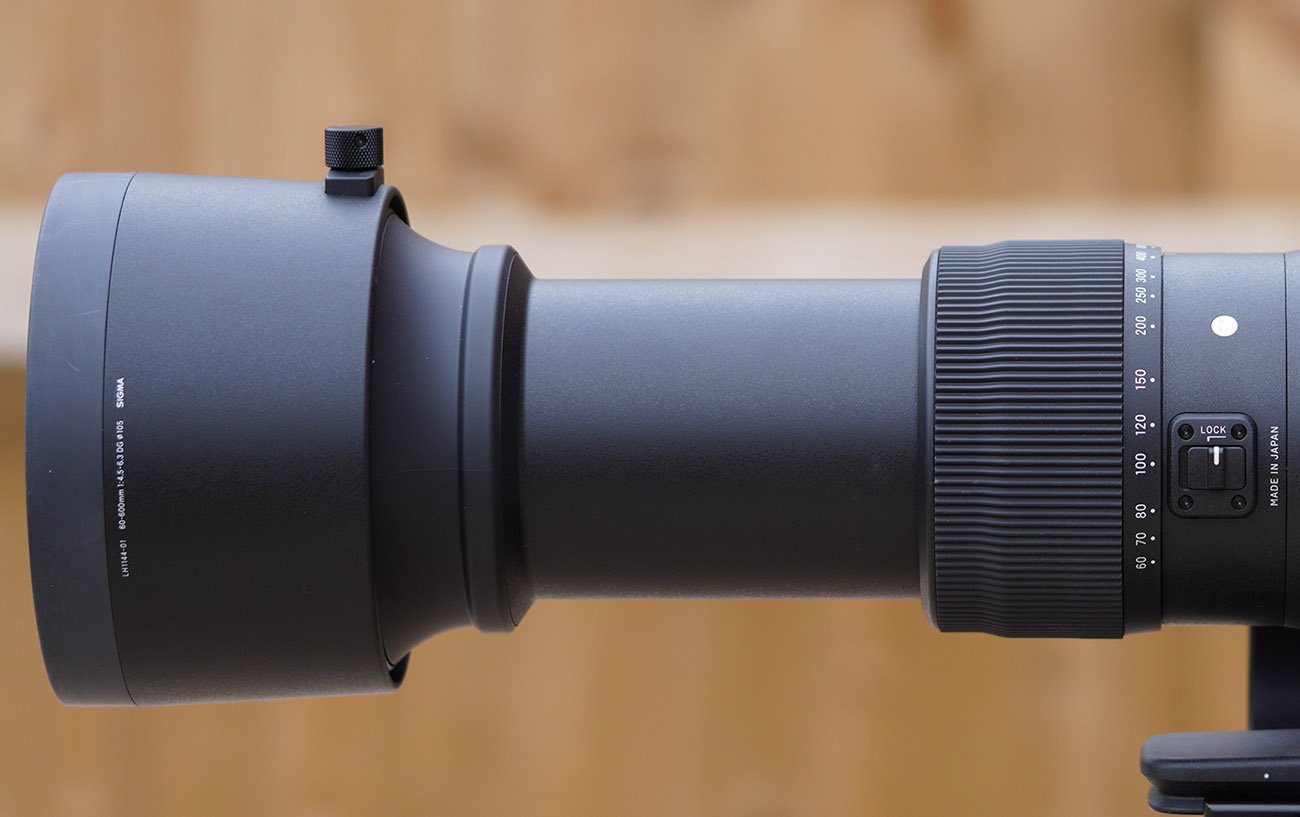
You operate the zoom by either twisting the large zoom ring or alternatively griping the large rubber ring towards the end of the lens and using the push/pull method. Like most heavy zoom lenses it does creep when pointed downwards, but you can eliminate this with the zoom lock switch. The zoom motion throughout the range is very smooth.
There’s really no getting around the fact that the 60-600 is a big heavy beast of a lens. With the lens weighing 2700g, then add on around 360g for the MC-11 and 1050g for my a9 with the battery grip and you have a total weight of around 4kg. If you handhold this lens for any length of time you may as well cancel your gym membership. I spent hours walking around my local wetland center with the lens attached to a shoulder strap only lifting it to take shots – it was definitely a good workout! Mounting the lens to a monopod or tripod will certainly make life a lot easier for you.
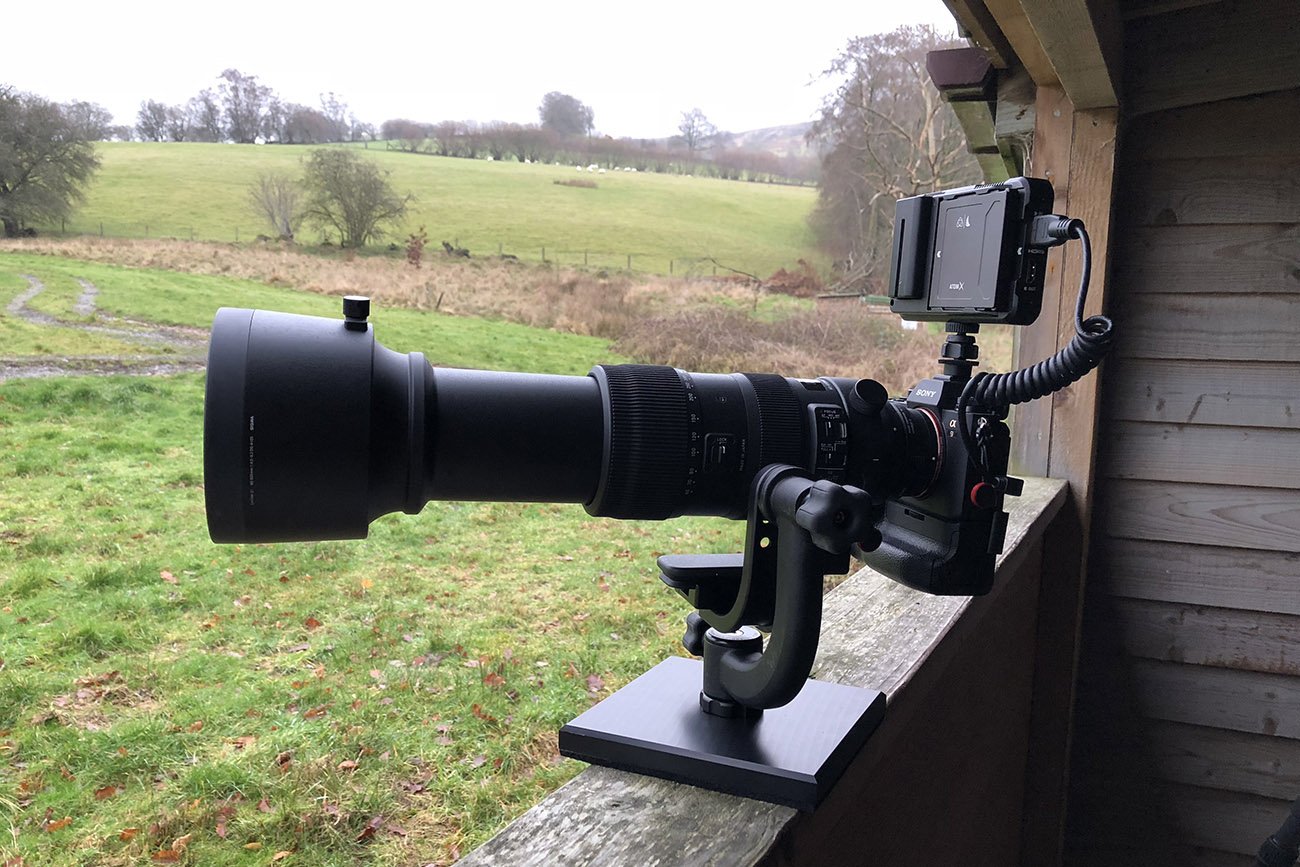
Focusing
When you adapt a lens from one mount to another AF performance often becomes the achilles heel. The camera is effectively speaking one language and the lens another, and the adapter (in this case the MC-11) acts as the translator between the two. With this type of setup the communication between lens and camera body isn’t always fluent and this can lead to poor AF performance.
Thankfully the AF performance of the Sigma 60-600 with the MC-11 is very good, I’d actually go as far as saying it’s excellent at times. However, there are two main factors that do affect the AF performance of this particular combination.
The first is the camera that you are using. Between the a9 and the a7III there is very little in difference in AF performance with the 60-600mm. On occasion I felt the a9 acquired focus faster but the difference was really minimal. The a7R III on the other hand was marginally slower than both the a9 and the a7III but still reasonably fast and perfectly acceptable.
The second factor that will affect your AF performance with the 60-600 is whether you are shooting in AF-S (Autofocus Single) or AF-C (Autofocus Continuous) mode. When set to AF-C the lens acquires focus a lot faster than AF-S where it tends to hunt a little more, I’d actually say that AF-S mode appears to be around 3x slower to lock focus. As for why this is I’m afraid I don’t have the answer for that.
Autofocus and subject tracking work well even in low light situations, you can see just how dark it is from the following screen capture at Gigrin Farm where I’d gone to shoot Red Kites. When I left home the sun was shining but when I arrived in Wales it was raining and very dull. The kites were also late coming down to feed by which time the sun had almost set and my ISO was well over 12000. Still, the 60-600 mounted to my Sony a9 had no trouble tracking the kites and nailing sharp images, sadly the very high ISO ruined them.

The only times that the AF did struggle was when changing from areas of very high contrast to low contrast, typically in this situation the lens would lose focus and hunt for a few seconds before finding focus again, but this also happens with native lenses.
Overall I was very impressed by the AF performance of the 60-600 with the MC-11. Still, I don’t expect you just to take my word for it and I’m sure we all have different ideas about what’s acceptable and what’s not when it comes to AF performance. So here’s a short video showing the autofocus performance of the 60-600 on the a9, a7 III and a7R III. Apologies if it makes you feel a little sick, it was shot at 600mm and I did jump around from subject to subject pretty quickly at times!

On another trip to Wales I decided to visit the Bwlch Nant Yr Arian Visitor Centre to shoot the Red Kites. Thankfully the weather was a little better than my trip to Gigrin Farm.
a9 @ 600mm | 1/1000 | f/6.3 | ISO 2500 | Cropped | Handheld | ** Full Resolution SOOC Download: JPEG | RAW
Sharpness
Sharpness wide open at is excellent at the center at all focal lengths, with edge sharpness improving when you stop down by one-stop. The affects of diffraction start to kick in at around f/16 and above, but I’m not expecting too many shooters will be stepping down this far.
Some of you might be curious about how the Sigma 60-600 stacks up against the Sony 100-400 GM with the 1.4x teleconverter which gives you a reach of 560mm on a full-frame camera. This is certainly by no means a detailed comparison, but here are a couple of very exciting brick wall shots. For each shot the 60-600 was mounted on my Jobu Design Jr. 3 Gimbal Head * and a Neil Neville Hide Base Plate, a 5 second delay was also used.
The images below are 100% center crops taken from around 20m away. The images are compressed so I recommend downloading the full resolution JPEGs if you want to make your own comparison.
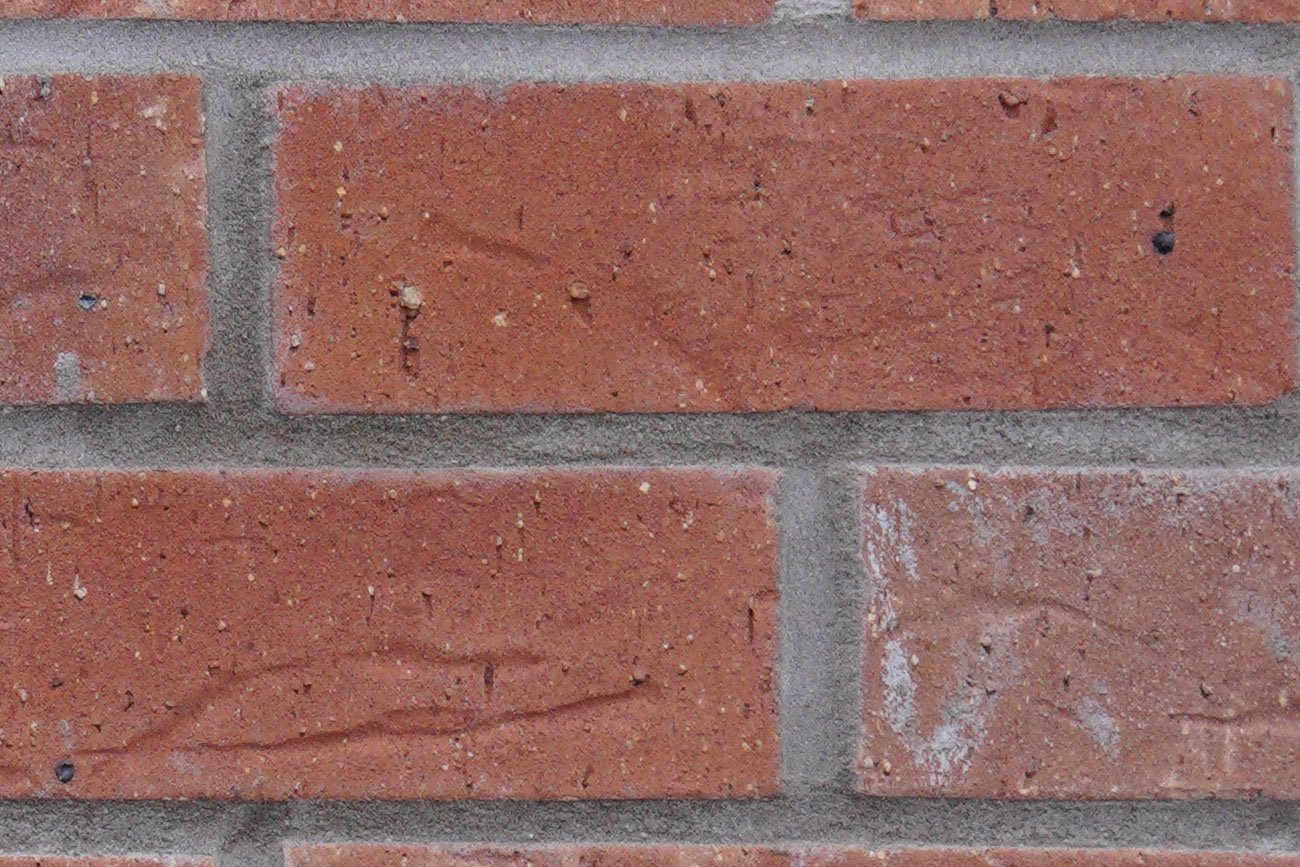
a7R III + Sigma 60-600 @ 600mm | 1/40 | f/8 | ISO 1250 | Cropped ** Full Resolution SOOC Download: JPEG
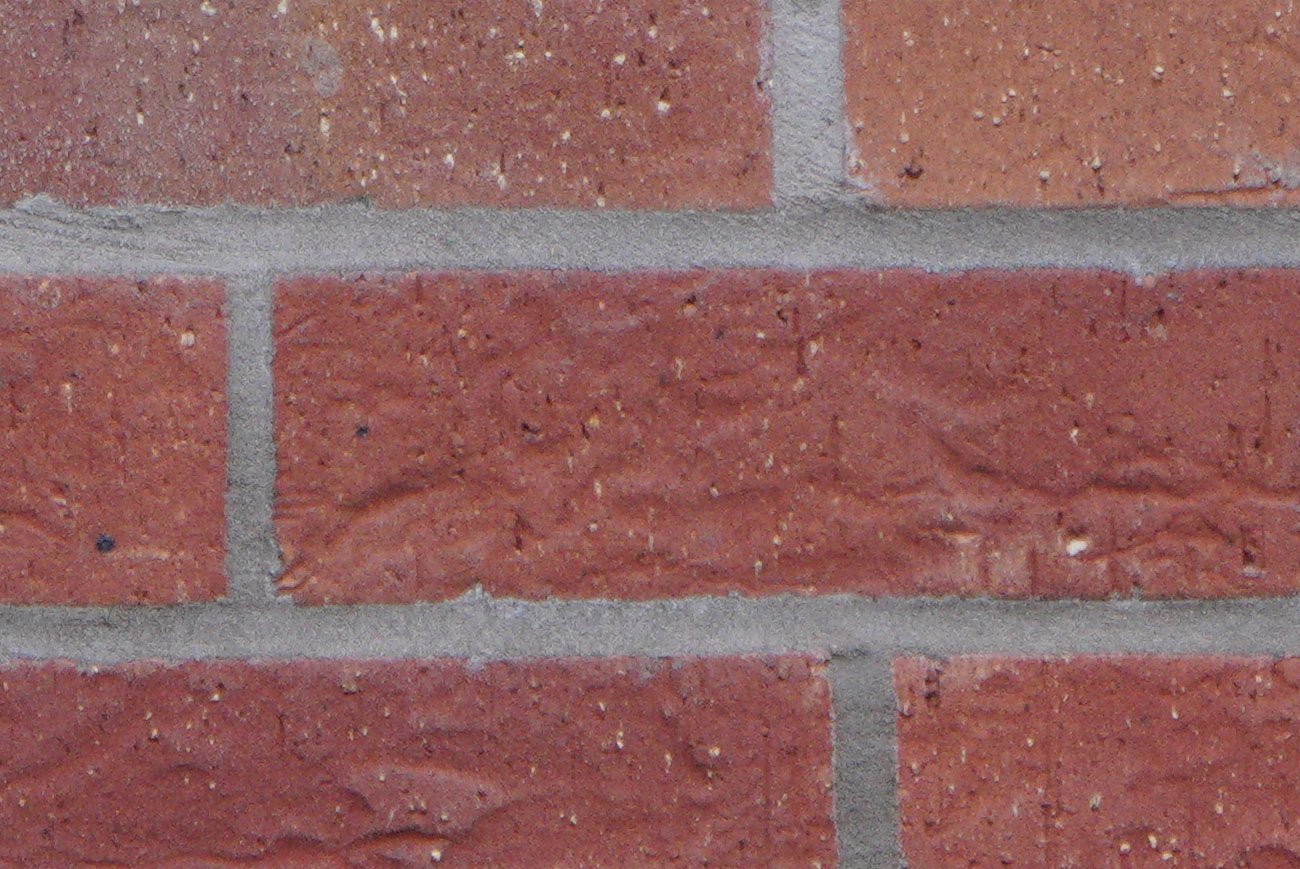
a7R III + Sony 100-400 GM + 1.4x @ 560mm | 1/40 | f/8 | ISO 1000 | Cropped ** Full Resolution SOOC Download: JPEG
Although I would really want to do a much more detailed comparison of these two lenses, from the few shots that I have taken it appears that the Sigma 60-600 has an advantage over the Sony 100-400 GM with the 1.4x attached when it comes to sharpness.
Bokeh
Bokeh is always very subjective. However, to my eyes this lens has nice smooth bokeh thanks to the nine rounded aperture blades. But let’s take a look at a couple of examples to see if you agree.

a7R III @ 600mm | 1/1600 | f/6.3 | ISO 400 | Handheld | ** Full Resolution SOOC Download: JPEG | RAW
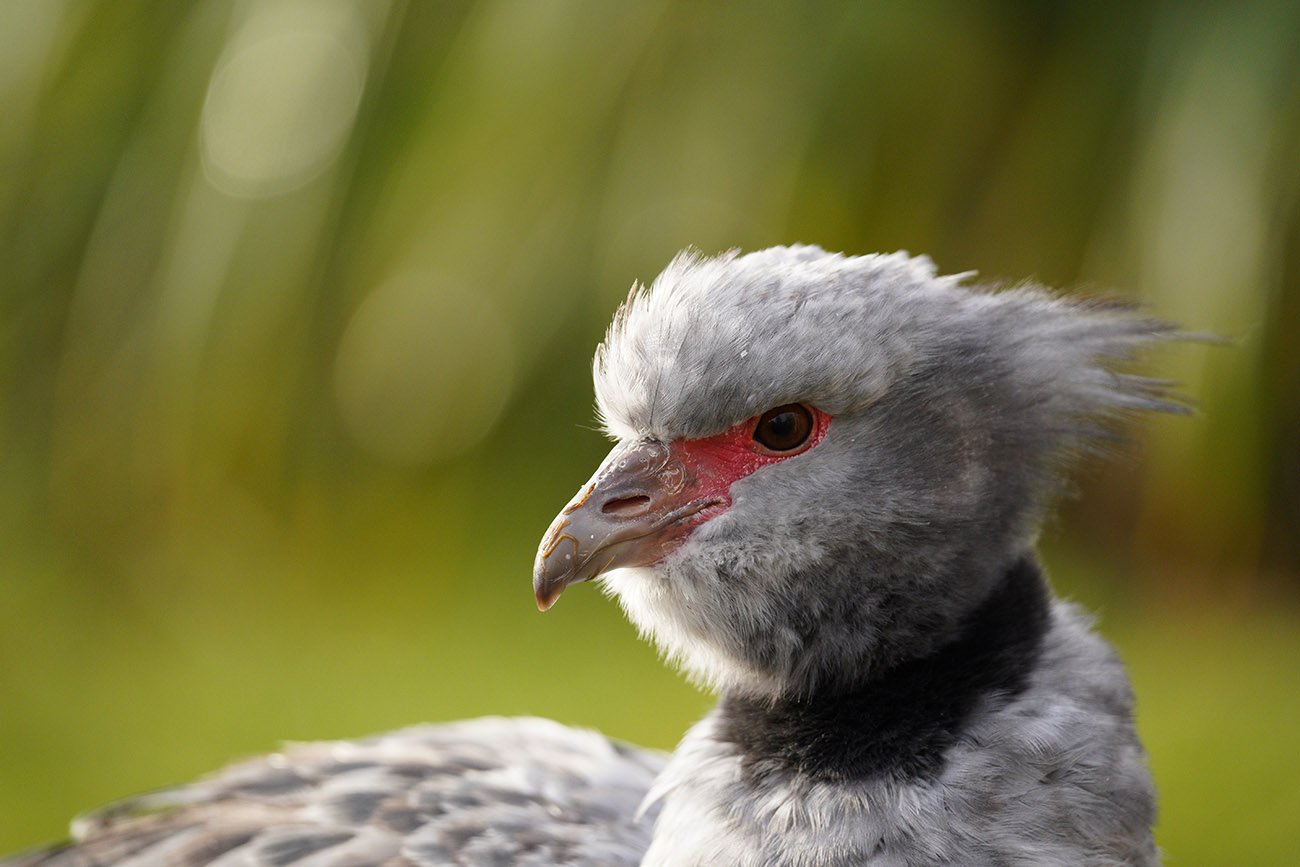
a7 III @ 600mm | 1/1250 | f/6.3 | ISO 2000 | Handheld | ** Full Resolution SOOC Download: JPEG | RAW
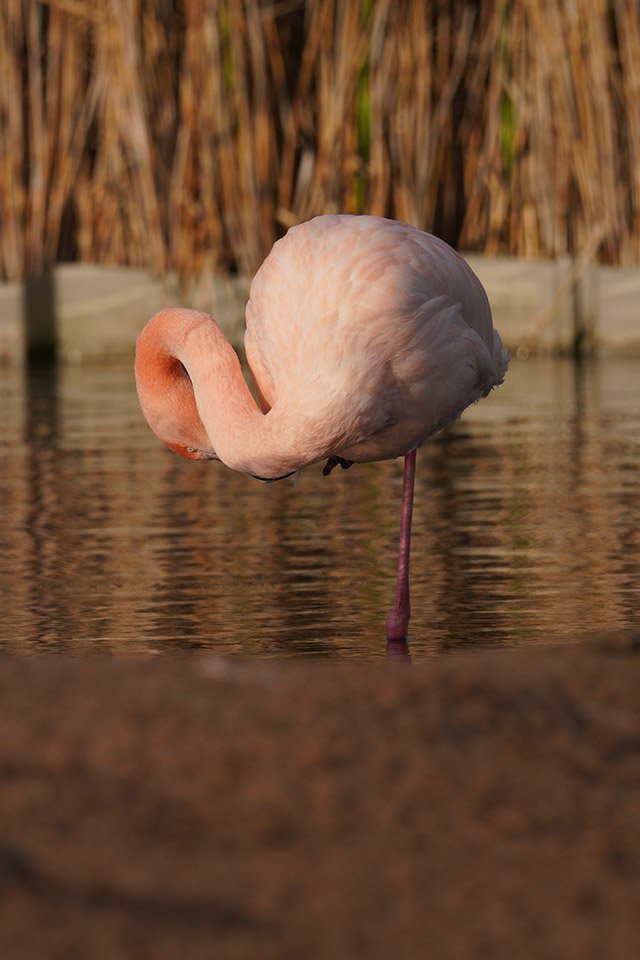
a7 III @ 600mm | 1/1000 | f/11 | ISO 640 | Handheld | Cropped | ** Full Resolution SOOC Download: JPEG | RAW
Vignetting, Chromatic Aberrations, and Distortion
At maximum aperture vignetting is visible throughout the zoom range but step down to f/11 and it’s barely visible. If you have in-camera corrections turned on then the vignetting appears to be corrected with JPEG images. The below image was shot with in-camera corrections turned off at 600mm and f/6.3.

Chromatic aberrations, typically seen as purple or blue fringes along contrasty edges appear to be well controlled. I couldn’t spot any significant CA in the images that I shot at the longer focal ranges. However I’ve read other reviews that mention some purple fringing at the shorter end, this is something that I failed to test myself but certainly won’t be omitting this test in the future.

There’s some barrel distortion at 60mm, but this becomes less obvious when you zoom in and the lens does a very good job of controlling pincushion distortion at long focal lengths right up to 600mm.
Alternatives
If you are looking for a superzoom lens with a tele end of around 600mm then here are a few alternatives to the Sigma 60-600 that you might want to consider.
- Sigma 150-600mm f/5-6.3 DG OS HSM S
- Sigma 150-600mm f/5-6.3 DG OS HSM Contemporary
- Tamron SP 150-600mm F/5-6.3 Di VC USD
- Sony FE 100-400mm f/4.5-5.6 G Master + 1.4x Teleconverter
Unfortunately other than the Sony FE 100-400 (my review) I’ve not used any of these lenses, so I can’t comment on how they compare to the Sigma 60-600. The Sigma’s will require the MC-11 adapter and the Tamron 150-600 is available in Sony A-mount, so you can use it on an E-mount camera with the Sony LA-EA3 or LA-EA4 adapter.

A side by side comparison of the Sigma 60-600 with MC-11 and the Sony 100-400 GM with 1.4x tele, both at maximum zoom.
Review Summary
I have to admit to being a bit of a native E-mount snob when it comes to lenses and I would never have consider purchasing a non-native lens – that is until the Sigma 60-600mm F4.5-6.3 DG OS HSM Sport lens landed in my hands.
I’ve been just as impressed by this lens as I have with my Sigma 70mm Macro Arts lens (my review), my only regret is that I didn’t have more time to spend with it and didn’t have the opportunity to shoot a wider variety of subjects.
Sure this lens is heavy and if you prefer to shoot handheld then unless you are built like Dwayne Johnson it’s probably not going to be the best lens for you. But if you are happy to use a monopod or tripod then you are going to love this lens.
As a wildlife shooter myself I’m always craving a longer focal length without sacrificing image quality. Adding the 1.4x teleconverter to the Sony 100-400 GM will get you to 560mm but this does put you at f/8 and you also lose a little in image quality. The 100-400 GM with the 1.4x tele will also set you back a whopping $3050 in the US, that’s $1000 more than the Sigma 60-600, although you will also need to spend $250 on the MC-11.
If you don’t mind the weight then the Sigma 60-600 is really a no brainer, well it would be if it wasn’t for Sigma’s 150-600mm Sports lens. At $1999.99 / £1899.99 the 60-600 is $200 more in the US and £600 more in the UK than the Sigma 150-600mm Sports. So if you don’t see any benefit in the 60-150mm focal length that the 60-600mm offers then you would financially be better off with the 150-600. However, I’ve not tested the 150-600 lens myself so can’t comment on how the autofocus performance compares, but after reading other reviews and forum posts it seems that the 60-600 is a little sharper at 600mm.
Overall this is an excellent lens, and if Sony does’t release a 600mm lens this year for under $2000 I might be very tempted to add the 60-600 to my own gear collection.
Pros
Build quality
Sharpness
Very fast AF speed when set to AF-C mode
Weather sealed
Arca-compatible tripod foot
Wide focal range
Cons
Heavy
No native E-mount, requires MC-11 adapter
Slow to lock focus in AF-S mode
Before You Go
Do you already own this lens? If you do, I’d love to hear your thoughts in the comments below. Thinking to buy it but have some questions? Drop them in the comments and I’ll do my best to help. Finally, if you love shooting wildlife (with Sony Alpha cameras!) and you are on Facebook, then please do join our friendly Sony Alpha Wildlife Shooters Group where you will also find other Alpha Shooters using Sigma glass on Sony body’s.


Would love to get The Sony full frame version DG DN when it is made available.
Nice review Tim
Cheers Christopher. I’m sure it’s only a matter of time before Sigma brings out a native version for E-mount, especially now Tamron has brought out their 150-500. Although the cost will probably be so close to the Sony FE 200-600 it might struggle to compete.
Hi Timothy,
Great review. Enjoy every single bit of it.
Now, I have a question.. My question would be: Would you lose MPs while using the Sigma lens with an A7R IV?
I’m currently in the market for lens and this Sigma has caught my attention. I will mainly use it for aviation photography but will do other types of photography as well.
Thanks! Stay safe.
Hi Daniel, glad that you liked the review. You wouldn’t lose any megapixels by using the Sigma 60-600 with the a7R IV but I can’t comment on the image quality with the a7R IV as I haven’t tested it I’m afraid. Personally now that the Sony FE 200-600 is available it’s hard to recommend the Sigma 60-600 unless you really need the 60-200 focal range. That said, quite a few people are having issues with the a7R IV + 200-600 combo (although many aren’t including myself), hopefully a firmware update will address this at some point. All the best, Tim
Hi Timothy,
now that Sony have release the 200-600 G. Have you compared the sharpness of both on A7R III or preferably on A7R IV?
Best Regards,
David
Hi David, I no longer have the Sigma 60-600 as this was just on loan so I can’t compare the sharpness so easily with the 200-600. I’d find it hard to recommend the Sigma now that the Sony 200-600 is available, unless you plan to use the 60-200 focal range a lot. The 200-600 is a very sharp lens and the autofocus is certainly a lot faster than the Sigma when adapted with the MC-11. The internal zoom and short zoom throw also makes the Sony a much nicer lens to use. All the best, Tim
I’ve taken quite a few shots with the 200-600 on my a7R IV and I’m very happy with the sharpness. I’ve not done any comparisons with the a7R III yet though, it is on my ever growing to-do list!
Oops sorry David, I’ve got the wrong lens in my head! I no longer have the 60-600 lens as it was just on loan. I probably won’t be getting this in again soon so I can’t really comment on the sharpness with the a7R IV. Personally with the 200-600 now out which being a native e-mount lens the AF is a lot better than the 60-600, it’s also lighter and the internal zoom is a joy to use. I’d find it very difficult to recommend the 60-600 now unless you really really need that 60-200 focal length.
Hi Timothy,
I own already the Sigma 60-600 and A7R III but I wanted to “upgrade” to A7R IV and to check if I can to keep my BIGMA or change for Sony 200-600.
So since previous time, I have already tried 2 differents copies of Sony 200-600 on A7R IV and compared with my Sigma 60-600
And after lot of pictures inside and outside, with different configurations, apertures…
Verdict :
For sure, Sony zoom have a faster AF, specially in low light (I don’t check the accuracy, back/front focus…), is less heavy and the zoom ring is super easy to use with one finger only…
BUT for sharpness, the results with my BIGMA is better than with the 2 copies of Sony 200-600 (I can sent you a crop if you want)
FYI, I will try this weekend, a 3rd copy of Sony 200-600 on A7R IV AND ALSO THE 600 F/4 GM !!! 😀
Best regards,
David
Hi David, it sounds like the 60-600 might be sharper then! Is there much in it with your shots? I guess it will come down to what you are shooting. If you are shooting a lot of birds in flight I’d imagine the AF benefits of the 200-600 would net you more keepers. Whereas if you are shooing slower subjects and the AF isn’t so important then you will probably appreciate the extra sharpness of the 60-600. I imagine it will only be a matter of time before Sigma comes out with a super telephoto that is designed for mirrorless, then it will definitely be a hard choice! I’ve not tried the 600 F4 yet and it’s probably best that I don’t! I’m hoping Sony will bring out a 500 F4 later this year with a more wallet friendly price point and a little lighter and smaller than the 600. Have a nice weekend, I hope the weather is kind to you!
I would like to know, if i must choose between sigma 60-600mm or sony 100-400mm on sony A7riii, Remembering A7riii can do apsc mode to 100-400mm become 150-600mm.
What is the best choice and sharpest lens for landscape, wildlife and sport?
Thank you for the review. Have you tried this lens with the version 5 firmware of A9? If so, do you see any improvement in AF?
The 60-600 was just on loan from Sigma, so unfortunately I can’t try it with the new v5 firmware on the a9. But I can’t imagine it will make a huge difference. Updates to the MC-11 firmware are more likely to help improve AF performance. All the best, Tim
Thanks for this. Very useful info.
Does the adapter affect the max frame rate on the A9 do you know?
Hi Ziggy. I didn’t test the maximum frame rate with the a9 unfortunately. I did ask Sigma but didn’t get a definite answer, only that it shouldn’t be affected in MF mode but there may be a small reduction in AF mode. I’ll be sure to test this myself next time!
Love the video review! Hope next time you could test AF-C with Sigma 1.4X teleconverter : )
Thanks Jiali 🙂 I’ll see what I can do for next time with the Sigma 1.4x
Lovely review with some great images, glad I stopped by.
Many thanks for the positive feedback Paul. I’m glad that you stopped by too! 🙂
Hi Tim,
Really great review of this beast of lens. Actually I am planning to get this lens for my A7Riii. I have 2 questions about this combo:
1. Does the adopter reduce the light by increasing F number?
2. Does AF C worth seamlessly for still &video?
It will be of great help if you can guide.
Sharath
Mumbai, India
Thanks for commenting Sharath 🙂 There is no glass in the MC-11 adapter so it doesn’t reduce the light hitting the sensor or increase the f-stop. AF-C works great for stills, I can’t comment on the video performance unfortunately as I didn’t test this (I’m not the biggest video shooter, but plan to work on this). I may try to borrow the lens again next month to do a comparison with the Sigma 150-600 S, I’ll be sure to test the video next time as well. All the best, Tim
Wow.. Thanks a lot for your express speed reply.. 🙂
You’re welcome Sharath 🙂